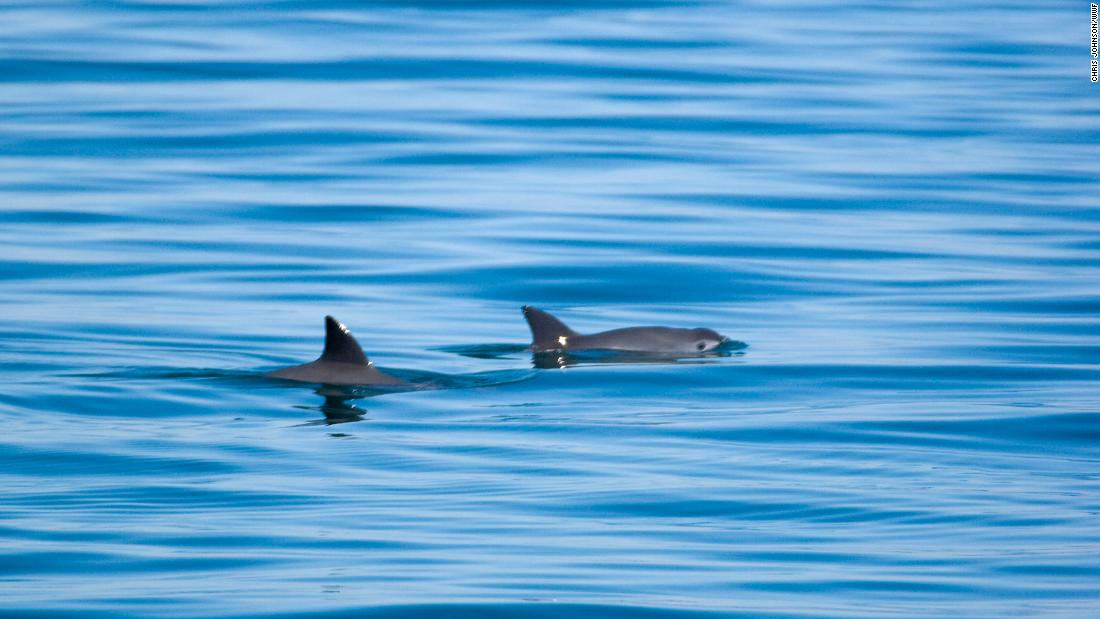However that would possibly not but spell doom for the vaquita porpoise, in line with new analysis.
Vaquitas had been driven to the threshold of going extinct because of unlawful gillnetting, which is used to seize shrimp and totoaba fish that percentage the similar habitat because the porpoises. The vaquitas, about 4 to five toes (1.2 to one.5 meters) in period, finally end up as “bycatch” since they don’t seem to be the supposed goal of the nets.
The totoaba fish, whose standing is susceptible at the Global Union for Conservation of Nature Purple Checklist of Threatened Species, has a swim bladder this is prized in China and used for standard drugs — or even noticed as a monetary funding. Mexico has outlawed totoaba fishing and made gillnetting unlawful the place the vaquitas are living, however the observe continues unabated.
With one of these small inhabitants left, researchers have wondered if vaquitas had been at a better possibility of extinction because of inbreeding.
Now, a crew of scientists — together with Taylor and Rojas-Bracho — have studied genetic patterns from vaquita tissue samples accumulated between 1985 and 2017 via Mexican researchers. Taylor is a senior scientist on the Oceanic and Atmospheric Management’s Southwest Fisheries Science Middle in L. a. Jolla, California, and Rojas-Bracho is a conservation biologist and member of the Nationwide Fee of Safe Spaces in Mexico.
“Who would have concept that a number of many years later those similar samples may just let us know such a lot,” stated find out about coauthor Rojas-Bracho in a commentary. “Genomics provides us clues into the species’ previous but additionally shall we us peer into the longer term.”
“If we will permit those animals to continue to exist, they are able to do the remainder,” stated find out about coauthor Jacqueline Robinson, a postdoctoral researcher on the College of California, San Francisco, in a commentary. “Genetically they nonetheless have the variety that allow them thrive for loads of hundreds of years, till the gillnets arrived.”
Small however thriving
The genetic knowledge from the vaquitas display that they seemed about 2.5 million years in the past and tailored to lifestyles within the shallow waters of the northern Gulf of California.
During the last 250,000 years, the inhabitants has fluctuated from a couple of thousand to about 5,000 vaquitas — which is unusual compared with different marine mammals. The truth that they’ve maintained a small inhabitants for see you later has helped to scale back the dangers of inbreeding as a result of they have got much less genetic variation between them. A complete survey of the inhabitants in 1997 confirmed there have been 570 porpoises, however that quantity has declined a great deal over the last 25 years.
Vaquitas additionally enjoy much less damaging genetic mutation related to small populations. When animals with detrimental genetic characteristics mate, it is much more likely that their offspring will die.
Relating to this inhabitants, that if truth be told helped to purge damaging characteristics from being unfold around the vaquita inhabitants.
“They are necessarily the marine identical of an island species,” Robinson stated. “The vaquitas’ naturally low abundance has allowed them to steadily purge extremely deleterious recessive gene variants that may negatively impact their well being underneath inbreeding.”
Variants hardly seem in better populations of animals as a result of it is extra not going that two animals with those characteristics will to find one every other and mate. But if a inhabitants swiftly reduces, the ones odds building up and their offspring enjoy “inbreeding despair.” This weakens their well being and will ship a species spiraling towards extinction.
“A prevailing view in conservation biology and inhabitants genetics is that small populations can acquire deleterious mutations,” stated senior find out about creator Kirk Lohmueller, affiliate professor of ecology and evolutionary biology and of human genetics on the College of California, Los Angeles, in a commentary.
“Then again, our discovering that the vaquita most likely has fewer strongly deleterious mutations hiding within the inhabitants implies that they’re higher poised to continue to exist long term inbreeding, which bodes smartly for his or her total restoration.”
How you can save them
Gillnets pose the best risk as a result of they motive the porpoises to drown.
The researchers ran simulations, in line with the genetic knowledge from the vaquitas, to look which situation labored best possible to give protection to them and calculate their extinction possibility over the following 50 years.
Right away casting off gillnets from their habitat was once the most efficient guess for the survival of the vaquitas. Sadly, even modest use of gillnets may just decrease their probabilities of rebounding. If vaquita deaths as bycatch decline via 80%, 62% of the inhabitants may just nonetheless move extinct, in line with the find out about.
“The survival of the folks, and the species, is in our arms. There’s a top likelihood genetically that they are able to recuperate, if we offer protection to them from gillnets and make allowance the species to recuperate once conceivable to ancient numbers,” stated find out about coauthor Phillip Morin, a analysis molecular geneticist at NOAA Fisheries’ Southwest Fisheries Science Middle, in a commentary.
Surveys had been additionally carried out to watch probably the most few ultimate vaquitas, and the researchers had been happy to look that they seemed wholesome or even had calves swimming with them, this means that they’re actively reproducing.
“Vaquitas have little or no time left,” stated find out about coauthor Christopher Kyriazis, a doctoral scholar in ecology and evolutionary biology at UCLA, in a commentary. “If we lose them, it will be the results of our human alternatives, now not inherent genetic components.”
Scientists proceed to actively track the vaquitas. The researchers imagine their option to this find out about might be used to expect the extinction possibility of alternative endangered species in line with their genetics.

